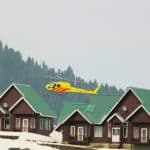Cycling and camping are two pastimes made for each other. Both offer the opportunity to enjoy the freedom of the great outdoors, the delight of discovering new places, and the pleasure of physical exercise. In the United Kingdom, a nation crisscrossed by a vast network of cycling routes, this combination is particularly attractive. But how do you find and book a campsite near these major routes? Let’s explore this in detail.
Identifying Suitable Camping Sites
Embarking on a cycling adventure is all about preparation. One of the key elements of this preparation is identifying suitable campsites along your chosen route. These could be traditional campsites, glamping sites, or wild camping spots, depending on your personal preference.
Lire également : What kind of wildlife precautions should you take while camping in the Forest of Dean?
Traditional campsites in the UK are typically well-equipped, offering amenities such as potable water, shower and toilet facilities, and sometimes even a small shop or café. Many of them also welcome pets, making them an ideal choice for those who want to bring their four-legged friends along for the adventure.
Glamping sites, on the other hand, offer a more luxurious camping experience. These sites usually feature furnished tents, yurts, or cabins, and often include extras like a private hot tub or a wood-burning stove. While they tend to be more expensive than regular campsites, they can offer a welcome touch of comfort after a long day’s cycling.
En parallèle : How to ensure adequate sun protection while camping along the UK’s South Coast?
Wild camping is technically illegal in most parts of England and Wales, but it is generally tolerated in Scotland and in many upland areas of the UK, as long as you follow the ‘leave no trace’ principle and avoid lighting campfires. Wild camping allows you to get even closer to nature and offers the greatest flexibility, but it also requires a higher level of self-sufficiency.
Using Online Resources to Find Camping Sites
Once you’ve decided on the sort of campsite you’re looking for, the next step is to find specific locations along your chosen cycling route. Thanks to the internet, this task has never been easier.
There are numerous online platforms that allow you to search for campsites based on a variety of criteria, including location, facilities, and price. Some of these platforms also allow you to book your stay directly through their website, making the whole process even more convenient.
In addition to these general camping platforms, there are also a number of resources specifically aimed at cyclists. Websites such as the UK Cycle Network provide detailed maps of cycling routes across the country, complete with information on nearby campsites.
Booking Your Camping Site
Having identified your ideal camping sites, the next step is to book them. It’s generally advisable to book your campsites in advance, particularly if you’re planning your cycling trip during the busy summer months or on popular routes.
When booking your campsite, there are a few key things to consider. Firstly, make sure to check the campsite’s policies regarding pets and campfires, especially if you’re planning to bring a dog or enjoy a cosy fire at night. It’s also a good idea to ask about the availability of potable water and other facilities, particularly if you’re planning to wild camp.
Another key consideration when booking your campsite is your estimated arrival time. Many campsites have a specified check-in time, and it’s important to ensure that this fits with your cycling schedule. If you’re planning a particularly long day on the saddle, it might be worth looking for a campsite with a more flexible check-in policy, or contacting the campsite in advance to arrange a late arrival.
Exploring Farm Camping Sites
For a truly unique camping experience, why not consider staying at a farm campsite? Many farms across the UK offer camping facilities, and these sites can offer a fantastic opportunity to get up close and personal with nature.
Farm campsites vary widely in terms of the facilities they offer, but many will have basic amenities such as toilets and potable water. Some might also offer additional perks such as the chance to buy fresh, locally-produced food or to get involved with farm activities.
One of the major advantages of farm camping sites is their location. Many are situated in beautiful rural areas, offering stunning views and easy access to country lanes and footpaths. This makes them an excellent choice for cyclists, as these quieter routes can often be more enjoyable to ride than busy main roads.
Taking Advantage of National Parks
The UK is home to 15 national parks, each offering their own unique landscapes and natural beauty. These parks cover a combined area of over 10,000 square miles, providing ample opportunities for both camping and cycling.
Each national park in the UK has its own policies regarding camping. Some, like the Lake District and the New Forest, have a number of well-maintained campsites within their boundaries. Others, like Dartmoor, allow wild camping in certain areas. It’s always worth checking the specific rules of the park you’re planning to visit.
When it comes to cycling, many national parks have dedicated cycle routes, ranging from easy family-friendly trails to challenging off-road tracks. These routes can offer a fantastic way to explore the parks’ diverse landscapes and wildlife, often taking you to places that are inaccessible by car.
When planning your cycling trip, it’s worth considering incorporating one or more national parks into your route. Not only will this allow you to enjoy some of the UK’s most stunning scenery, but it will also provide plenty of options for camping along the way.
Get to Know South East Englanda
For cyclists who are planning a trip in the south east of England, you are in luck. This region is rich in both spectacular cycling routes and excellent camping facilities. The region is known for its charming coastal towns, lush vineyards, and historic landmarks. South East Englanda is a perfect destination for those who love the combination of cycling and camping.
Cycling in South East Englanda is a joy. There are numerous cycle routes to suit all abilities, from gentle coastal paths to challenging hill climbs. The South Downs Way, for instance, is a long-distance path that takes you through the heart of the South Downs National Park, offering stunning views and varied terrain.
Camping in South East Englanda is equally rewarding. There are hundreds of campsites dotted throughout the region, ranging from large holiday parks with facilities for motorhomes and tents to smaller, more secluded sites. Many campsites are a stone throw away from major cycle routes, making them a convenient base for your cycling adventure.
When booking your campsite, remember to consider the size and type of your camping unit. Some campsites cater specifically to tents, while others also have facilities for motorhomes. Furthermore, some sites offer glamping units for those who want a bit more luxury.
The Importance of Following Camping Rules
When you are camping, it’s crucial to follow the campsite’s rules. This not only ensures your safety and comfort but also helps preserve the natural beauty of the area for future visitors. Most campsites will have rules regarding noise levels, campfires, trash, and the use of facilities.
Campfires are a traditional part of the camping experience, but they can be harmful to the environment if not managed correctly. Some campsites therefore prohibit campfires, while others have designated areas where they can be safely lit. Always check the campsite’s rules before starting a fire.
Trash is another important consideration. Leaving trash behind can harm wildlife and spoil the environment. Most campsites provide trash bins, and it’s important to use them. If you’re wild camping, remember the ‘leave no trace’ principle and take all your trash with you when you leave.
Using campsite facilities correctly is also vital. This includes toilets, showers, and potable water sources. These facilities are there for the benefit of all campers, and misusing them can create problems for everyone.
Conclusion
Cycling and camping offer a unique way to explore the UK’s splendid outdoors. The country’s network of cycle routes provides countless opportunities for discovery, while its abundance of campsites caters to all tastes, from basic wild camping to luxurious glamping.
Finding and booking a campsite near your chosen cycle route requires some research and planning. Make use of online resources to find suitable sites, and remember to book in advance, particularly during the busy summer months.
Consider exploring farm camping sites or national parks for a truly immersive natural experience. And when you’re out there, enjoying the freedom of cycling and the tranquillity of camping, remember to respect the campsite rules and the environment.
With careful planning, you can enjoy a memorable adventure, combining the joys of cycling and camping in the UK’s stunning landscapes. So, what are you waiting for? It’s time to start planning your next cycling and camping trip!











